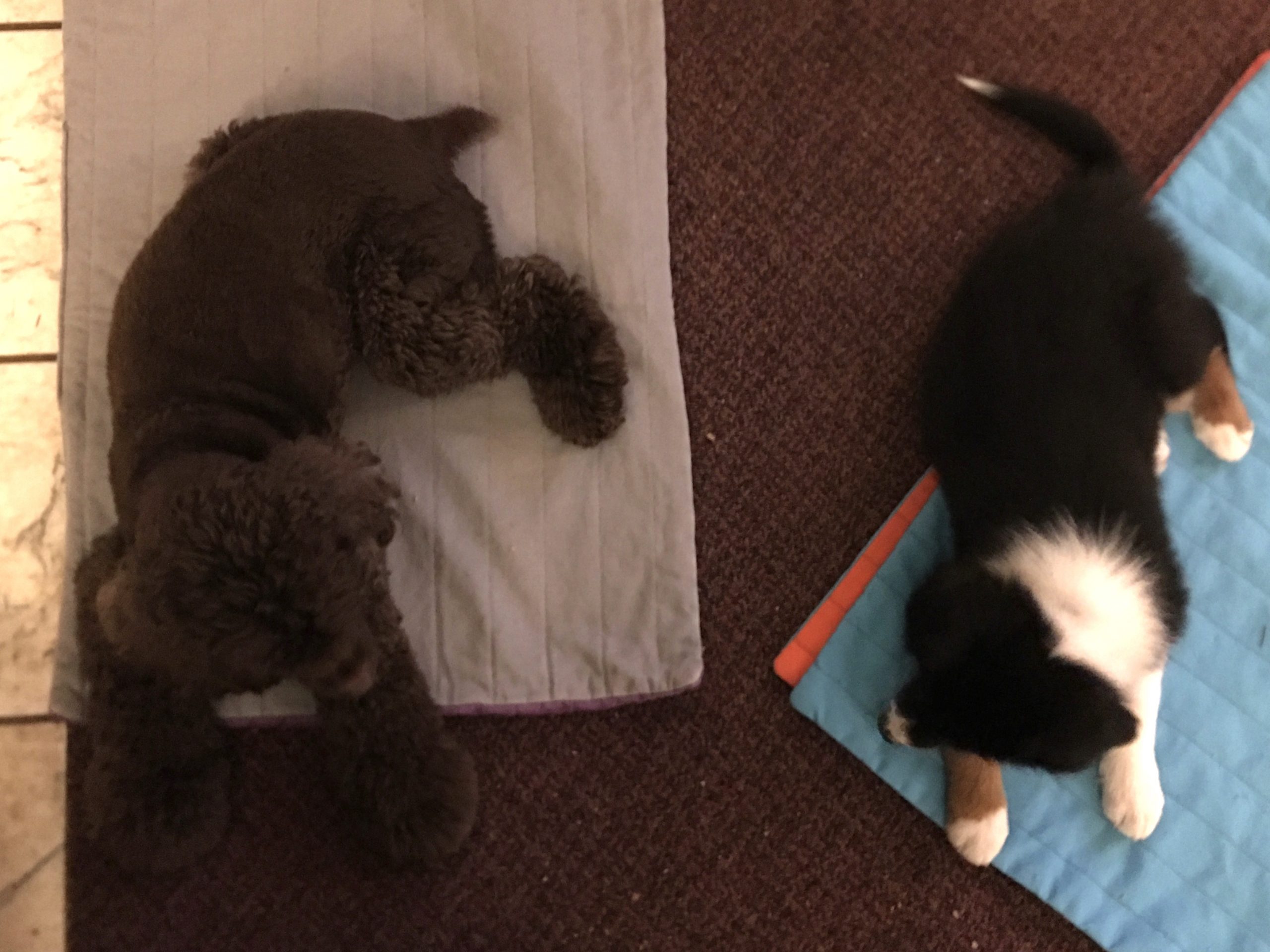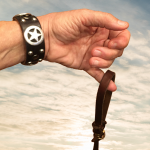Lazy Training: “Capturing”
Clients have heard me confess more than once that I am a “lazy trainer”. Does that mean that I don’t take my own dogs to classes and workshops? NO! Do I never teach behaviors? NO! I delight in training with my dogs, perhaps too much. (Just ask my accountant.)
One of my favorite ways to train, though, is to catch the good behaviors my dogs offer me before they move on to doing things I’d rather they not. The trainers’ term for this is “capturing”, and it’s an excellent way to introduce a new puppy to your home. If your older dog has never been trained this way it’s fun to help them understand that they can make treats happen through their good behavior.
Teaching a dog to go to a mat and chill out is a great way to introduce them and you to capturing.
Capture the behavior
- Place a mat on the floor. This can be a bathmat, a blanket, or a special mat designed for this purpose.
- Sit or stand next to the mat, with treats/kibble on you or nearby. You are looking at the mat, versus looking at your dog.
- When Fido steps onto the mat, click or say a special “marker word” (yes!) and place 5 or so treats/kibble on the mat, one at a time. Make a bit of a production about it!
- Next, toss a treat/kibble off the mat as you say a release cue — such as “okay!” or “free!”. A release word tells your dog that they can leave the mat.
- Look at the mat and when Fido returns, click/mark and treat 5 times again on the mat.
- Once your pup has returned to the mat reliably a few times, pause to see if he will offer a sit. If this happens, click/mark and reward!
- If your dog doesn’t offer a sit, go back to steps 3-5 a few times, before pausing again to see if he will offer a sit.
- When he is reliably offering a sit on the mat, pause and see if he’ll offer a down.
- As with the sit, if your dog doesn’t offer a down right away, go back to earlier steps for a bit.There is a bit of an “art” to figuring out how long to wait for your dog to choose to sit or lie down once they’ve arrived on the mat, before you simply reward for being on the mat. You want give them enough time to think for a moment and figure out what behavior might earn them something; but you also don’t want to wait so long that they get frustrated and wander off.
- Practice at this level until you have a dog who, after being released to eat the kibble tossed off the mat, is reliably choosing to return to the mat and settle down.
Name the behavior
- You can name the behavior — add a verbal “cue” such as “go to your mat” or just “mat” or “place”. Begin by saying your cue just as Fido is about to step on the mat.
- When Fido is reliably stepping on the mat as you say the cue, say the cue a little bit sooner, as Fido is approaching the mat and is near.
- When Fido is reliably continuing to the mat when you say the cue as he is approaching from close by, say the cue when he is approaching from farther away
- Once Fido is reliably going to the mat when you say the cue early in his approach, say the cue before he begins to move toward the mat at all.
- Continue to be generous with the reinforcement (treats/kibble)! You want him to see his mat as that place where lots of great treats show up.
Changing your distance and orientation from the mat
You want eventually be able to send your dog to the mat from just about anywhere.
Distance
- When Fido is reliably going to the mat on cue with you standing next to the mat, take a single step away from the mat and say your cue.
- When step #1 is going well, take a second step away from the mat, then say your cue.Don’t be in a rush to challenge your dog by increasing your distance from the mat — make sure Fido is getting on the mat happily and easily before you make it harder! Distance: Only after he has successfully done a series of repetitions while you are next to the mat should you begin to slowly increase your distance from the mat when you say the cue. Think of this part of the training as “even though I’m 2 steps from the mat, can you still . . . ?”
- Continue adding distance in tiny bits as your dog continues being successful.
Orientation
- Reduce your distance from the mat. Because we are adding a new level of difficulty (orientation), we want to reduce the difficulty in other factors.
- Change your orientation to the mat slightly by turning just a few degrees when you give the cue. (This teaches your pup that he gets rewarded for going onto the mat and lying down, no matter where your body or face is pointed.)
- Add a few more degrees to your turn from the mat.
- Continue increasing the extent to which you are turned from the mat.
- As your dog is successful with the increase in your turn from the mat, mix it up by turning a few degrees the other way, etc.
Bringing it all together
When Fido is doing great with increased distance, and changes in orientation, bring it together by being a little distance away from the mat, and turned away a little bit, and ever so gradually increase the difficulty by increasing distance and orientation one at a time.
Catching your dog in the act … of doing good things
We humans seem to be wired to notice right away when things go wrong, but it’s often harder for us to take note when things are going right! Challenge yourself to reward your dog for doing 3, 5, or even 10 good things a day! Some examples might be:
- Keeping four paws on the floor instead of jumping. (Check out our “Don’t Jump on Grandma” handout at https://joyfuldogllc.com/jd/wp-content/uploads/2014/12/Dont-Jump-on-Grandma.pdf.) If “four on the floor” keeps paying off, your dog won’t need to jump.
- Sitting next to the kitchen counter before “surfing”. Rewarding the sitting generously goes a long way to reducing surfing.
- Lying quietly on his bed or in his crate. The more we make those decisions pay off, the more our dogs will choose to do them.
What are some good things your dog does that you’d like to see more of?




